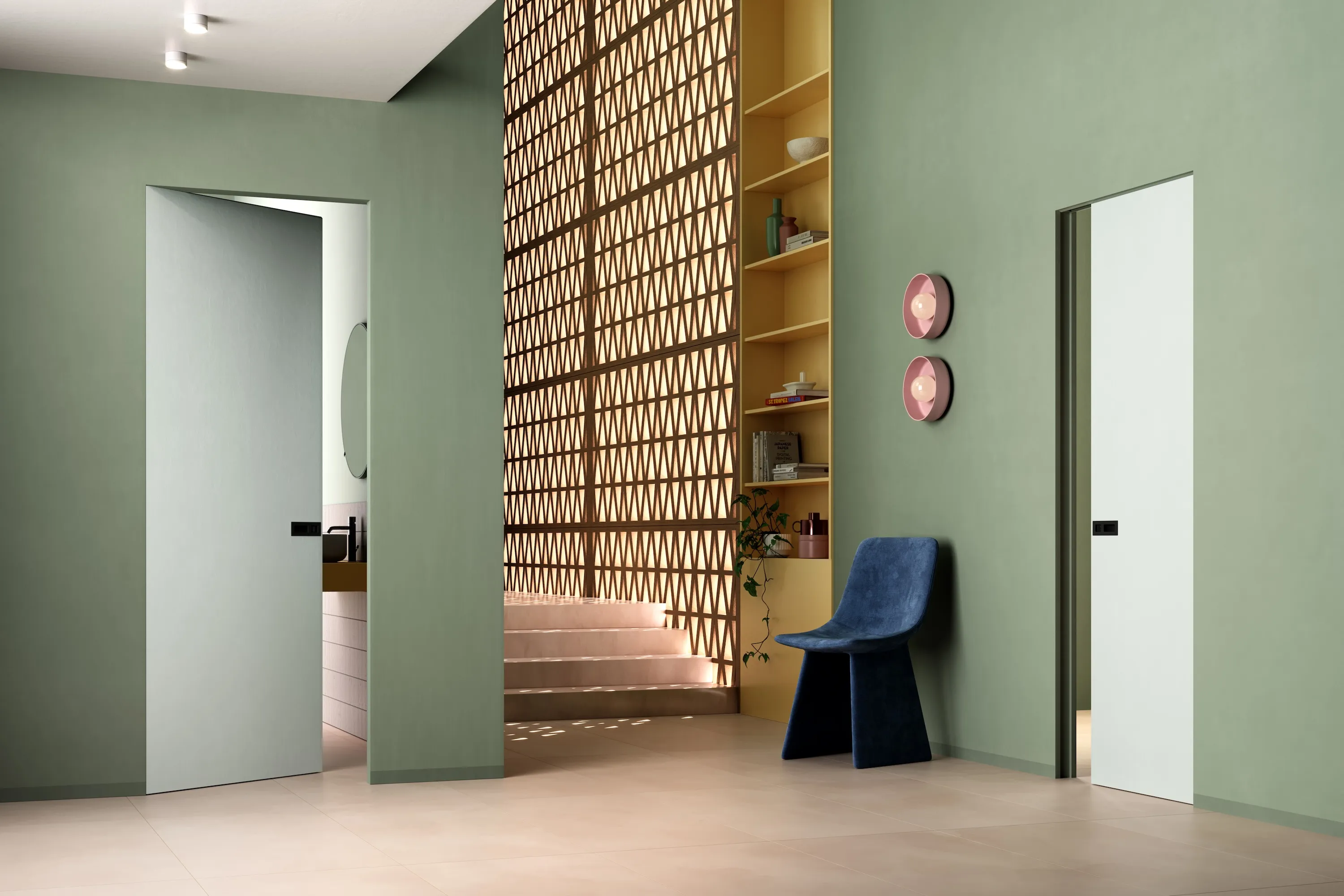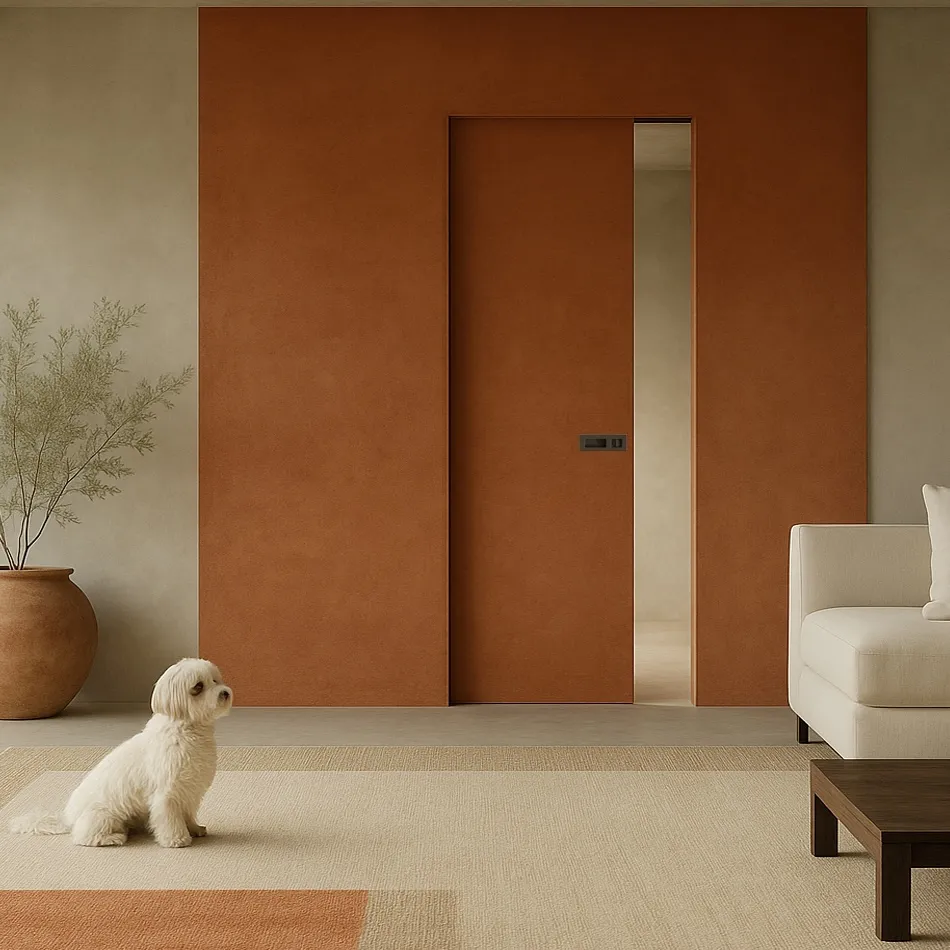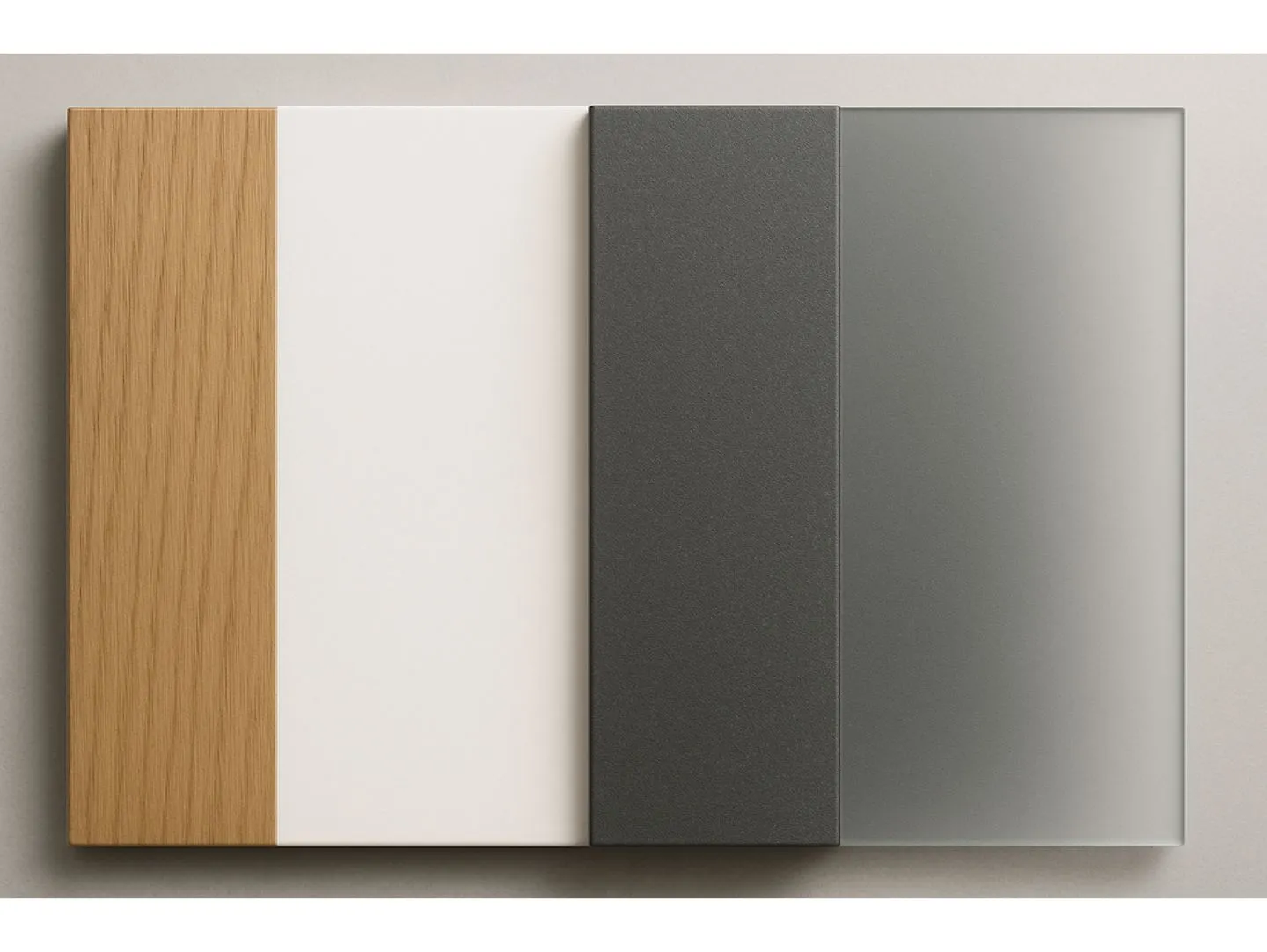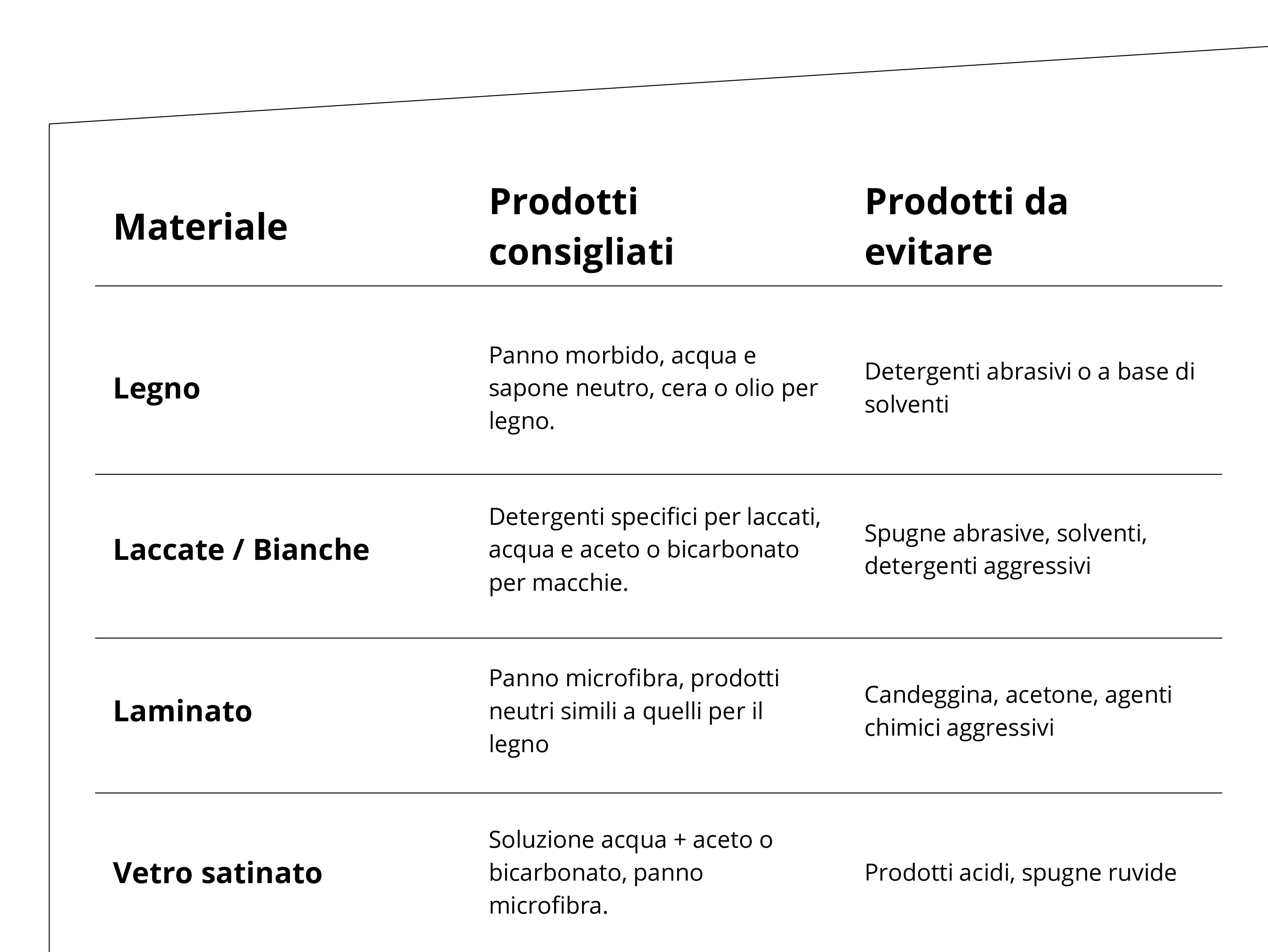Guía para el mantenimiento de puertas

Doors are furnishing elements that influence the comfort and aesthetics of the home. Proper maintenance preserves their functionality and beauty over time, preventing wear, noise and sliding defects. In this guide, we analyse routine maintenance and specific cleaning activities for different materials (wood, laminate, lacquered, glass) and opening systems (sliding, hinged). You will also find advice on how to care for hinges, locks and seals, as well as tips on how to avoid common mistakes.
Routine door maintenance: what to do and how often

Sliding doors
Cleaning tracks and carriages: sliding systems (concealed or external wall) must slide smoothly. Check at least twice a year that the tracks are clean. Remove dust and debris with a cloth or vacuum cleaner, then wipe with a damp cloth and warm water to remove any remaining dirt.
Lubrication: after cleaning the track, apply a light lubricant to the mechanical parts (wheels, carriages and hinges) to facilitate sliding.
Alignment check: check that the door does not scrape the floor or have excessive play. If movement remains difficult even after cleaning, contacting a technician is definitely a good idea.

Hinged doors
Cleaning and lubricating hinges: hinges can accumulate dust or crack. Clean them with a dry cloth and add a few drops of specific hinge oil.
Checking the door frames: periodically check that the screws are tight and that the door does not “sag” downwards. If you notice any misalignment, adjust the hinge or ask an installer to do so.
Locks and handles: clean handles and locks with a microfibre cloth and lubricate the internal parts of the lock, if necessary, to ensure smooth operation.
Cleaning doors according to material

Wooden doors
Regular cleaning: remove dust and dirt with a soft, slightly damp cloth; avoid aggressive detergents that can damage the paint.
Periodic washing: once or twice a year, wipe with a well-wrung cloth using water and neutral soap; dry immediately to prevent moisture absorption.
Minor repairs: use wood filler or repair wax for deeper scratches; for light stains, try bicarbonate of soda or vinegar.
Lacquered doors
Specific cleaning products: for lacquered doors, use specific products for lacquered surfaces to maintain their shine; avoid abrasives. Dust with a dry cloth, then use a damp cloth with a specific cleaning product.
Removing stains: on white doors, surface stains can be treated with water and white vinegar. For stubborn stains, use bicarbonate of soda; then rinse and dry to avoid streaks.
The same principle applies to laminate and matt lacquered doors.
Satin glass doors
Recommended products: use solutions of water and white vinegar or bicarbonate of soda; avoid acidic and aggressive detergents.
Procedure: remove dust and fingerprints with a microfibre cloth, clean with the water and vinegar solution, then dry thoroughly to avoid streaks.
Hardware maintenance: include hinges and handles in cleaning, drying thoroughly to prevent corrosion.
Summary of products to use and avoid when cleaning doors

Maintenance of accessories and components
To ensure optimal operation, in addition to cleaning the door, it is important to take care of the metal components and mechanical parts.
Hinges and tracks
Clean them with a dry or slightly damp cloth, removing dust and debris.
Lubricate periodically with a light oil to prevent squeaking and wear.
Check for corrosion and tighten any loose screws.
Locks, handles and accessories
Clean handles and plates with a neutral detergent and dry thoroughly.
Periodically lubricate the lock with a specific product to ensure smooth internal movement.
Check that the locking bolts are working properly to ensure security.
Seals and insulation
Check the seals to ensure thermal and acoustic insulation; replace them if they are worn or detached.
Clean the seals with a soft cloth and check that there are no breaks.
Prevention: tips to avoid damage
Even the most robust doors can be damaged if used improperly or exposed to unfavourable conditions. Taking simple daily precautions can prevent premature wear and tear and preserve performance over time. Here are some good practices to follow to reduce the risk of breakage or malfunction.
Avoid leaning heavy objects against the door or using the door as a support.
Protect the door from excessive moisture and heat; use mats and doormats to limit the entry of sand and dust.
Do not use aggressive products such as bleach, acetone or acids; opt for neutral detergents instead.
Carry out periodic checks on the alignment, hinge play and correct functioning of the locks.
In the event of anomalies or structural damage (door rubbing, broken rollers, panels swollen by humidity), contact a technician for repair or replacement.
Cleaning and maintenance frequency
Keeping doors in good condition requires a series of simple, scheduled maintenance tasks. The frequency of these tasks depends on both the type of door and its daily use: they range from monthly cleaning to remove dust and debris to periodic maintenance of components such as tracks and rollers, recommended at least twice a year for sliding models. Regular maintenance helps prevent wear and tear and ensures smooth and quiet movement at all times.
Routine cleaning: at least once a month for all types of doors, removing dust and dirt.
Routine maintenance of sliding doors: twice a year (cleaning tracks, lubrication).
Hardware inspection and lubrication: every 6-12 months, depending on intensity of use.
Deep cleaning and protection renewal: once or twice a year (e.g. applying wax to wooden doors or polish to lacquered doors).
Maintaining interior doors does not require a great deal of effort, but it does require regularity and attention to detail. With a few simple steps — proper cleaning according to the material, lubrication of mechanical parts and periodic checks — you can keep your door looking like new for many years.
To discover models, materials and innovative solutions, visit the Ermetika product pages or contact our consultants for more information on installation, spare parts and accessories.
Explore the complete range at Ermetika and choose the perfect door for your rooms.
Further information:
